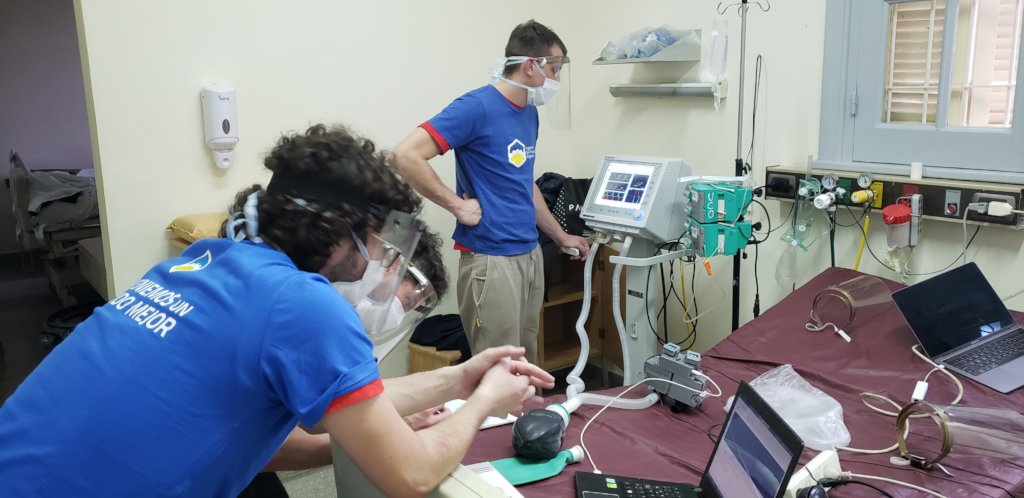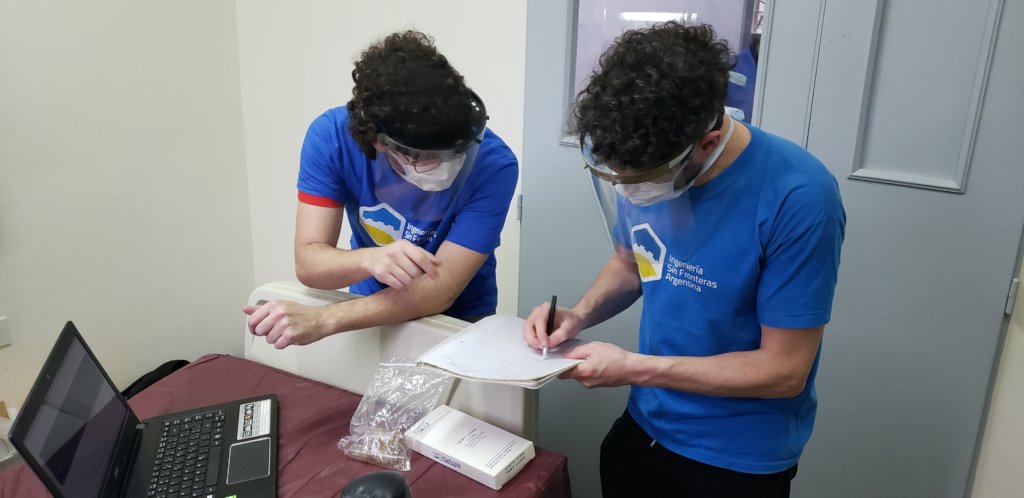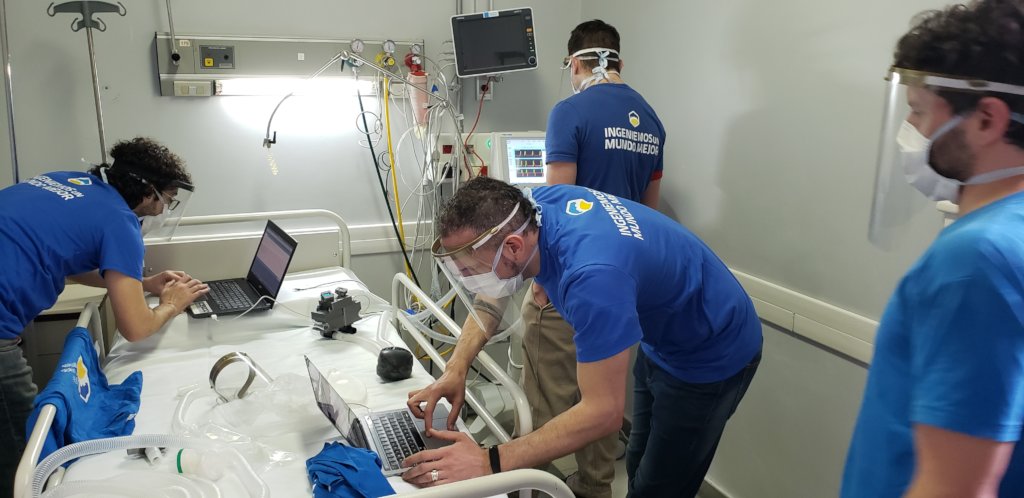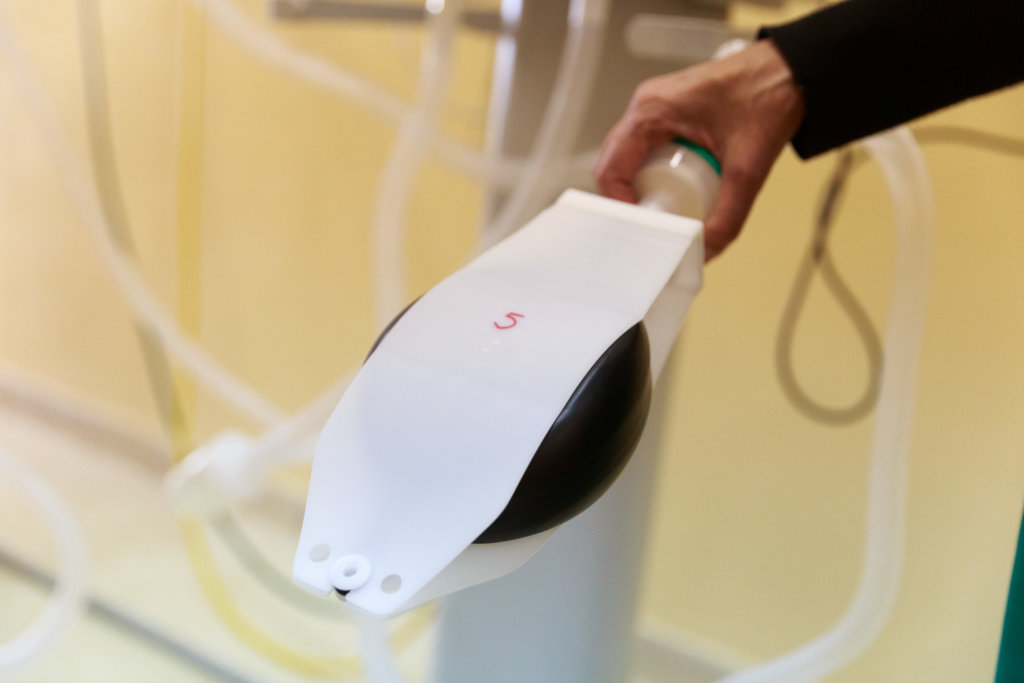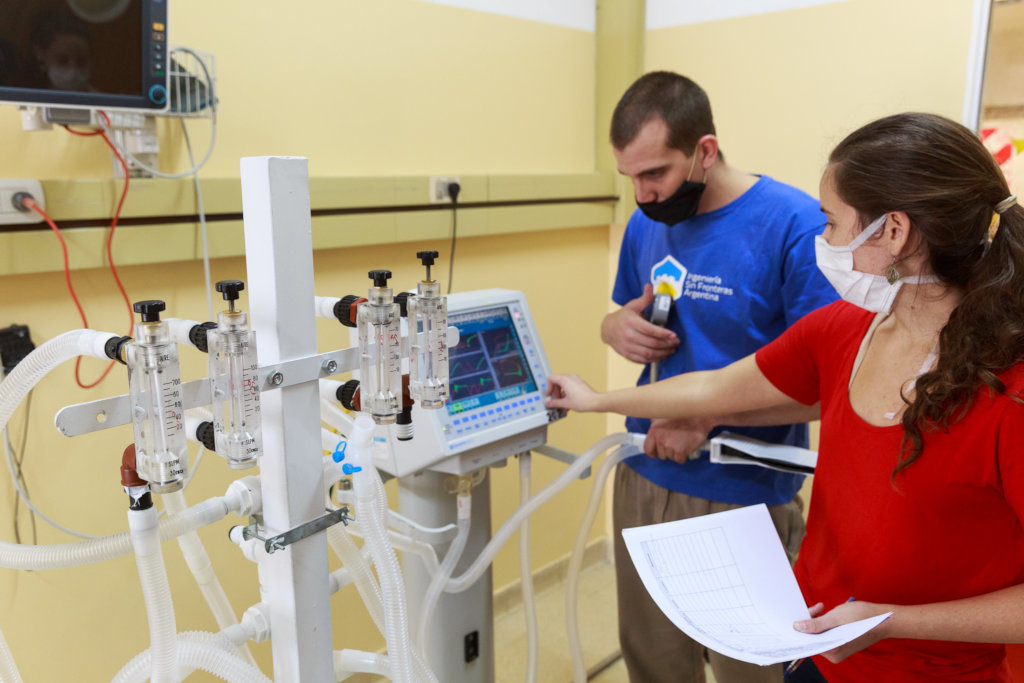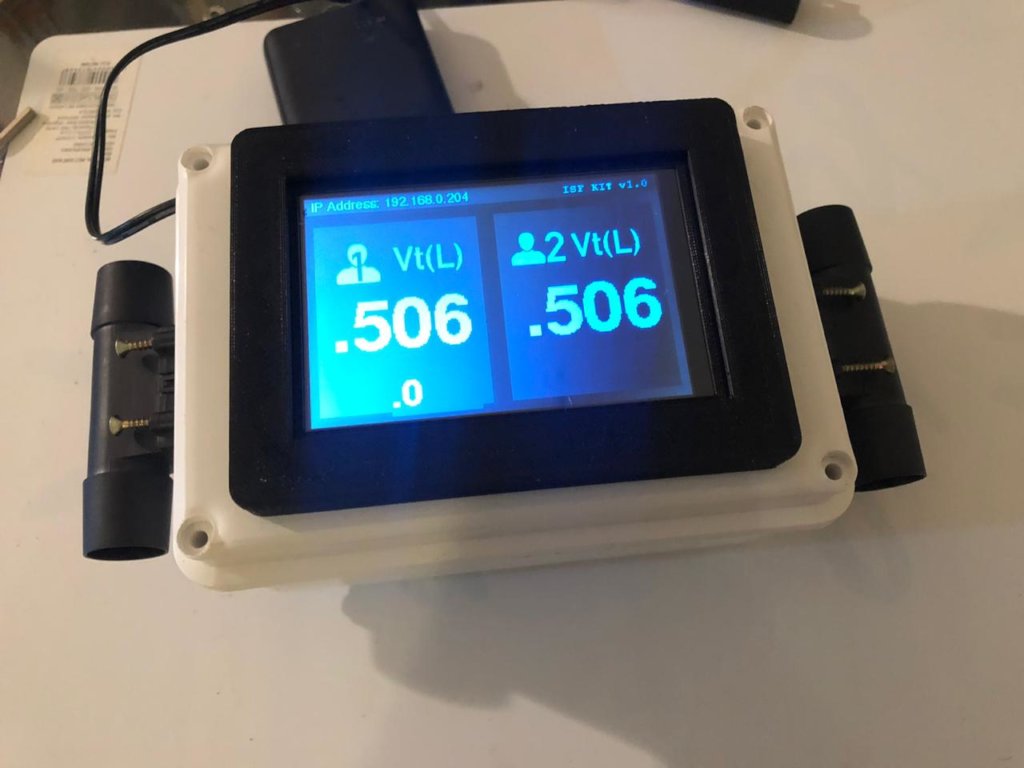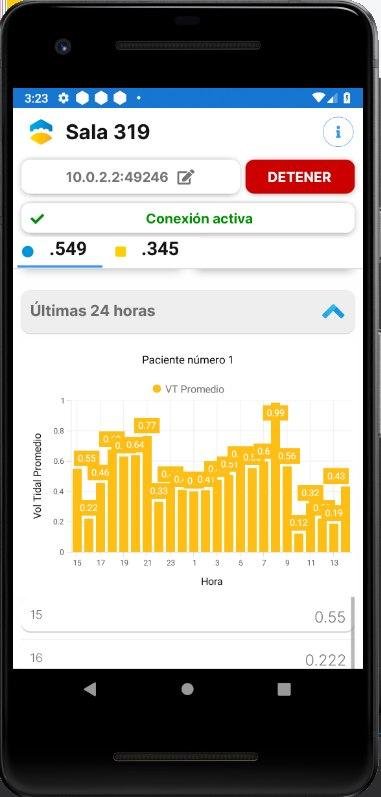By Adan Javier Levy | Project Leader
After conducting several tests with a first mechanical prototype (Version 1.0) ISF-Argentina interacted with specialists from different hospitals who are treating COVID cases. Taking into consideration their feedback, it was decided to rethink the project with the aim of developing the minimum functionalities required by those medical teams and to facilitate the use of the equipment for the team that will operate it in intensive care and in a demanding context.
By expanding the capacity of a ventilator for two patients instead of four, design costs were reduced. It also facilitates the adoption of the equipment by medical personnel.
The new proposal significantly improves the accuracy in measuring the volume of air entering the lungs of patients by incorporating electronic sensors. It also includes five one-way valves to avoid cross contamination and adjustable PEEP (Positive End Expiratory Pressure) valves which are essential for treating COVID patients.
The new compressed design allows all the electronics, flow sensor and display to be grouped in a smaller device.
The developed app (available for Android) can be connected to the device by reading a QR code included in the display where the tidal volume of the patients can also be read. This allows medical personnel to remotely monitor the patients via a cell phone, reducing the risk of contagion.
Furthermore, the equipment is able to save all the historical measurement data in an internal memory to analyze its operation and develop future improvements.
Next steps:
Links:
Project reports on GlobalGiving are posted directly to globalgiving.org by Project Leaders as they are completed, generally every 3-4 months. To protect the integrity of these documents, GlobalGiving does not alter them; therefore you may find some language or formatting issues.
If you donate to this project or have donated to this project, you can receive an email when this project posts a report. You can also subscribe for reports without donating.
